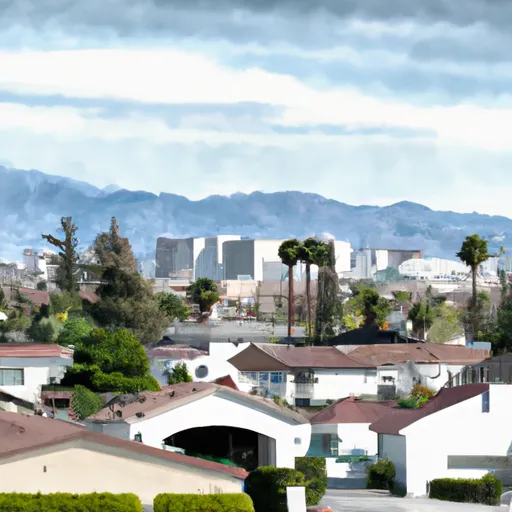-
 Snoflo Premium
Snoflo Premium
Get unlimited access to all our content
With no Ad interruptions! - Start Your Free Trial Login with existing account
Terra-Bella
Eden Index
Climate
8.5
•
Recreation
4.2
•
Community
0.8
•
Safeguard
5.1/10

Terra Bella, located in Tulare County, California, offers a unique blend of agricultural charm and natural beauty. The town experiences a Mediterranean climate, characterized by hot, dry summers and mild, wet winters. Summers often see temperatures reaching the 90s°F, while winters usually stay in the 50s°F. The region benefits from its proximity to the Sierra Nevada Mountains, which help moderate temperatures and provide a stunning backdrop.
As for hydrology constituents, Terra Bella sits within the Tulare Basin, an agriculturally productive area. The town relies on various water sources, including groundwater and surface water from the nearby Sierra Nevada snowmelt.
Outdoor enthusiasts can indulge in a range of recreational activities in Terra Bella. The region is known for its scenic hiking trails and camping sites, allowing visitors to explore the stunning landscapes of the nearby Sequoia National Forest and Sequoia National Park. Additionally, the area offers opportunities for fishing, boating, and birdwatching in local lakes and reservoirs.
In summary, Terra Bella, California boasts a Mediterranean climate, a reliance on diverse water sources, and provides ample opportunities for outdoor recreation amidst its picturesque surroundings.
What is the Eden Index?
The Snoflo Eden Index serves as a comprehensive rating system for regions, evaluating their desirability through a holistic assessment of climate health, outdoor recreation opportunities, and natural disaster risk, acknowledging the profound impact of these factors on livability and well-being.
Climate Health Indicator (CHI): 8.5
Terra-Bella receives approximately
288mm of rain per year,
with humidity levels near 36%
and air temperatures averaging around
18°C.
Terra-Bella has a plant hardyness factor of
9, meaning
plants and agriculture in this region tend to thrive here all year round.
By considering the ideal temperature range, reliable water supplies, clean air, and stable seasonal rain or snowpacks, the Climate Health Indicator (CHI) underscores the significance of a healthy climate as the foundation for quality living.
A healthy climate is paramount for ensuring a high quality of life and livability in a region, fostering both physical well-being and environmental harmony. This can be characterized by ideal temperatures, reliable access to water supplies, clean air, and consistent seasonal rain or snowpacks.
Weather Forecast
Streamflow Conditions
Tulare-Buena Vista Lakes
Area Rivers
Tulare-Buena Vista Lakes
Snowpack Depths
Tulare-Buena Vista Lakes
Reservoir Storage Capacity
Tulare-Buena Vista Lakes
Groundwater Levels
Recreational Opportunity Index (ROI): 4.2
The Recreational Opportunity Index (ROI) recognizes the value of outdoor recreational options, such as parks, hiking trails, camping sites, and fishing spots, while acknowledging that climate plays a pivotal role in ensuring the comfort and consistency of these experiences.
Access to outdoor recreational opportunities, encompassing activities such as parks, hiking, camping, and fishing, is crucial for overall well-being, and the climate plays a pivotal role in enabling and enhancing these experiences, ensuring that individuals can engage in nature-based activities comfortably and consistently.
Camping Areas
| Campground | Campsites | Reservations | Toilets | Showers | Elevation |
|---|---|---|---|---|---|
| Tule Rec Area | 104 | 685 ft | |||
| Rocky Hill | None | 683 ft |
Nearby Fishing
Nearby Ski Areas
Catastrophe Safeguard Index (CSI):
The Catastrophe Safeguard Index (CSI) recognizes that natural disaster risk, encompassing floods, fires, hurricanes, and tornadoes, can drastically affect safety and the overall appeal of an area.
The level of natural disaster risk in a region significantly affects safety and the overall livability, with climate change amplifying these risks by potentially increasing the frequency and intensity of events like floods, fires, hurricanes, and tornadoes, thereby posing substantial challenges to community resilience and well-being.
Community Resilience Indicator (CRI): 0.8
The Community Resilience Indicator (CRI) recognizes that education, healthcare, and socioeconomics are crucial to the well-being of a region. The CRI acknowledges the profound impact of these elements on residents' overall quality of life. By evaluating educational resources, healthcare accessibility, and economic inclusivity, the index captures the essential aspects that contribute to a thriving community, fostering resident satisfaction, equity, and social cohesion.

